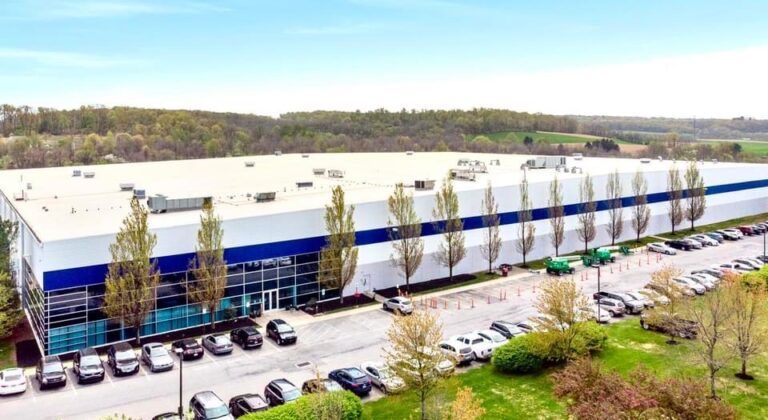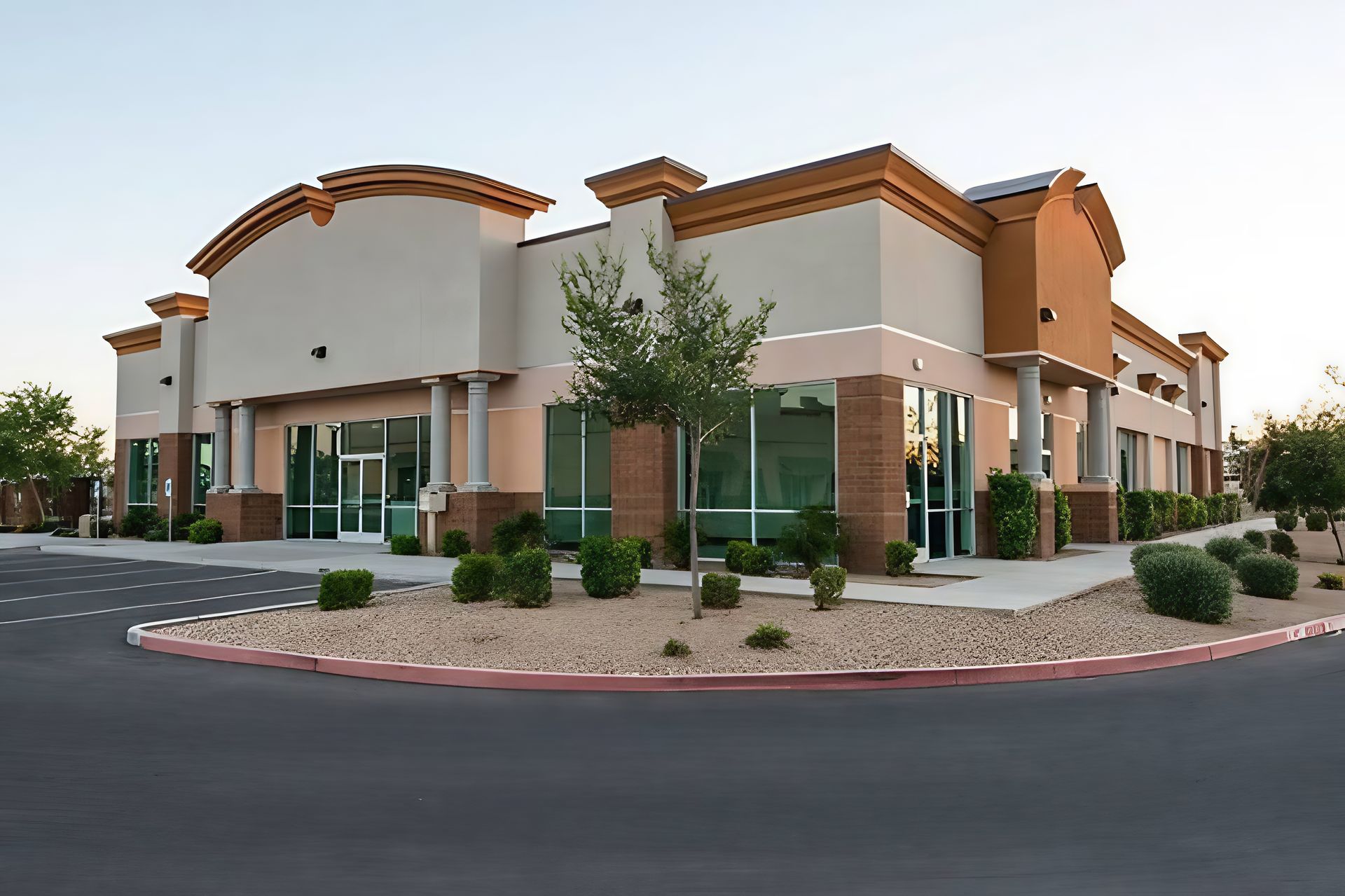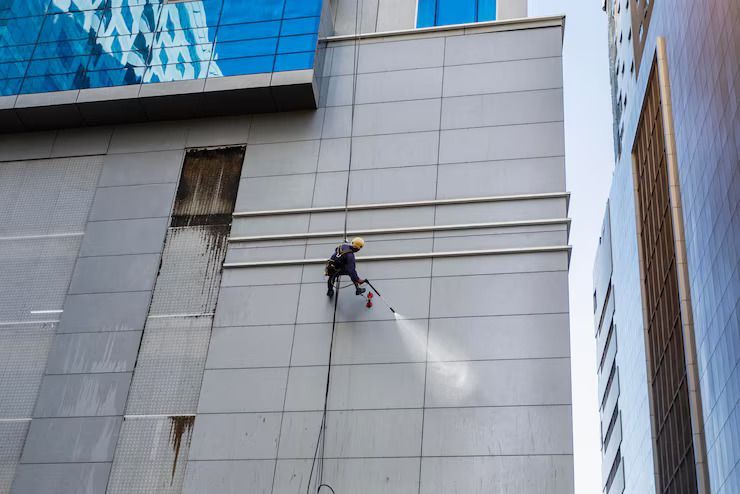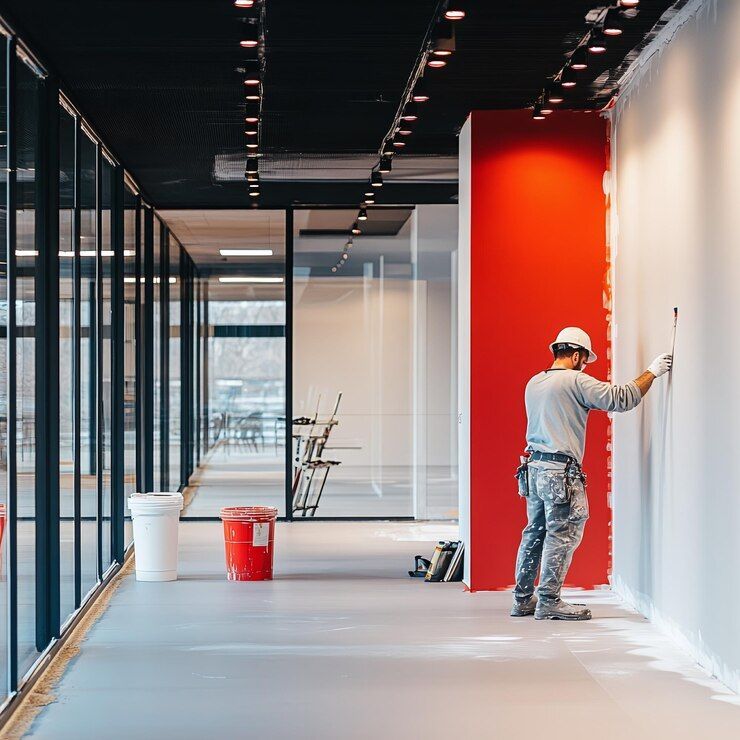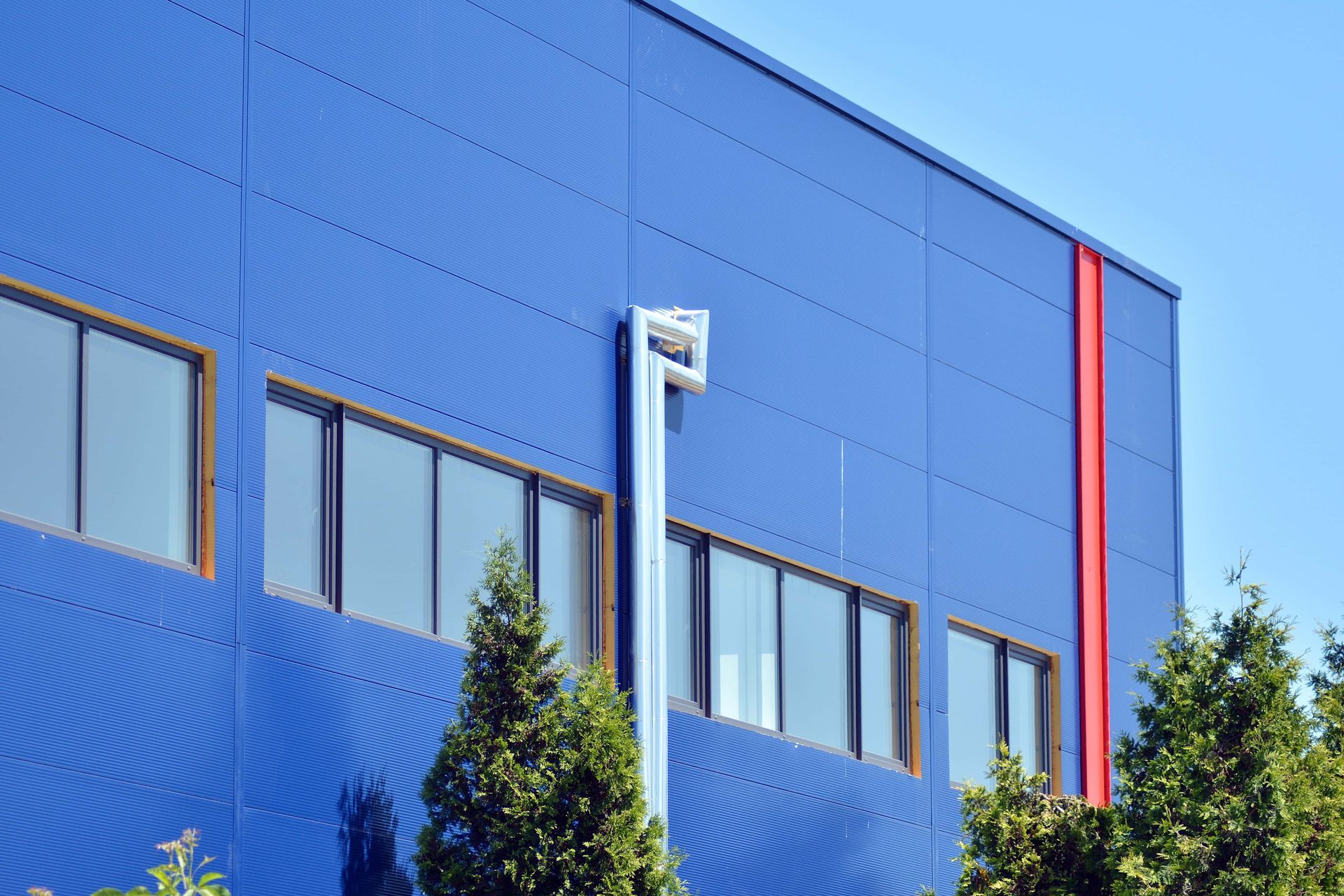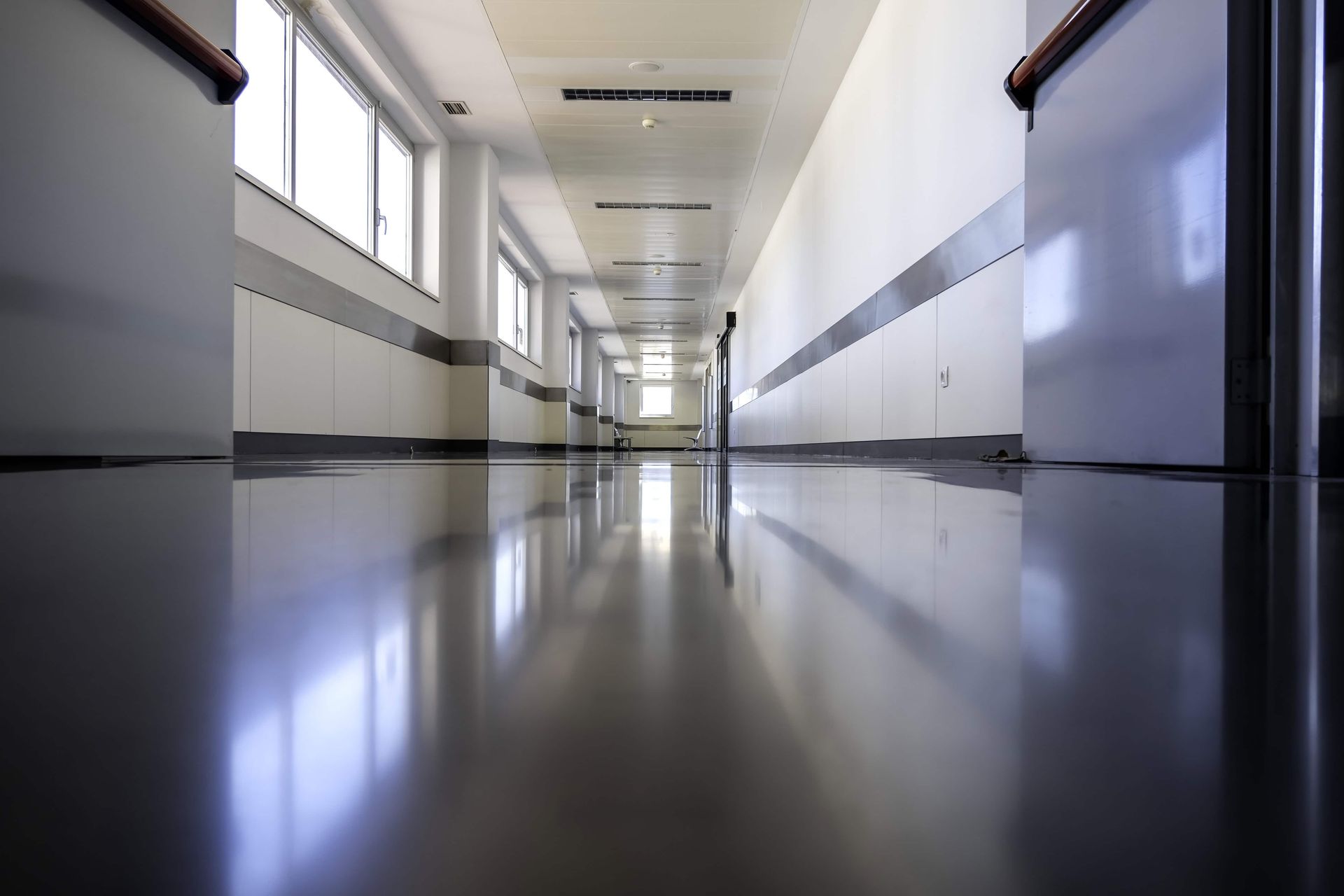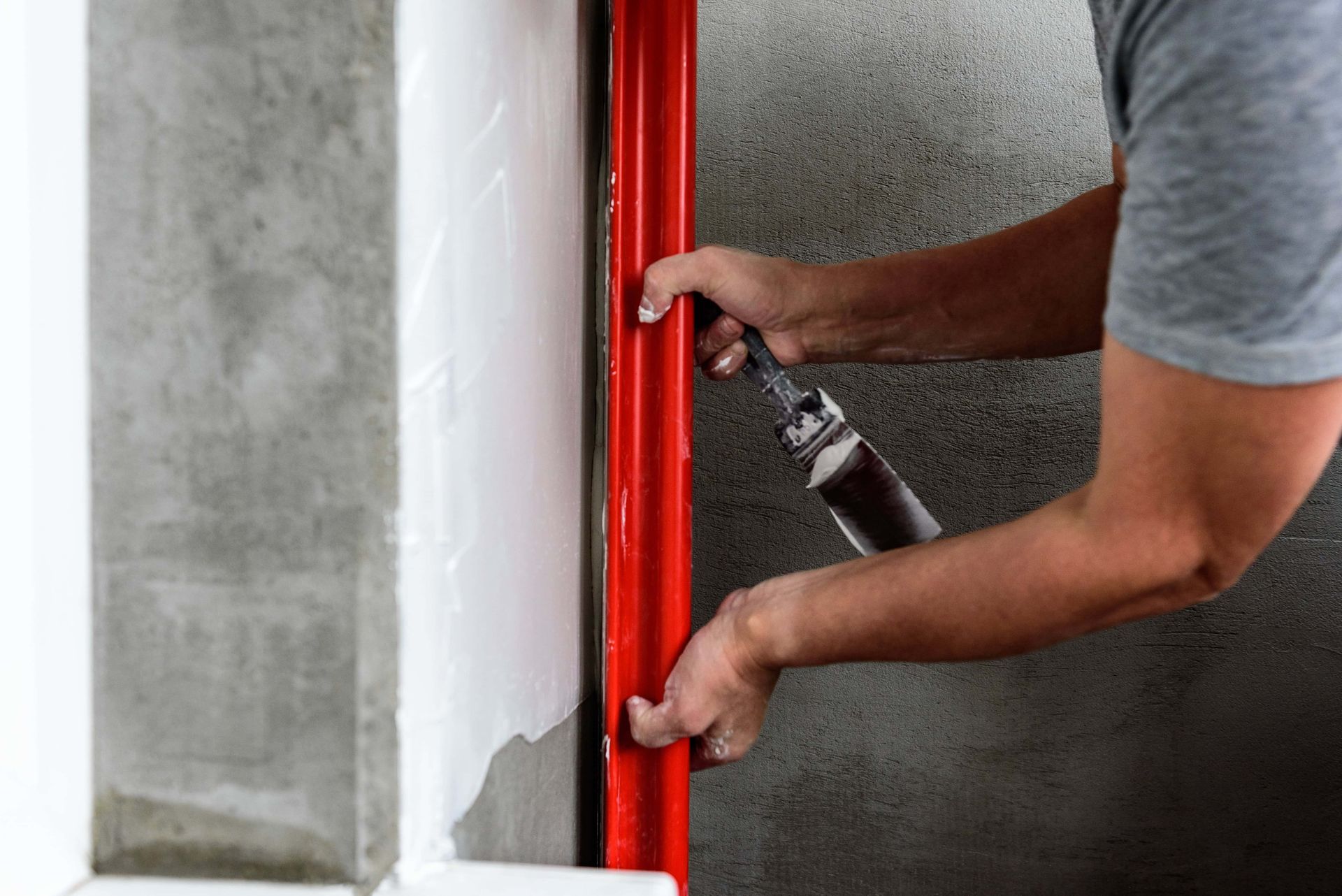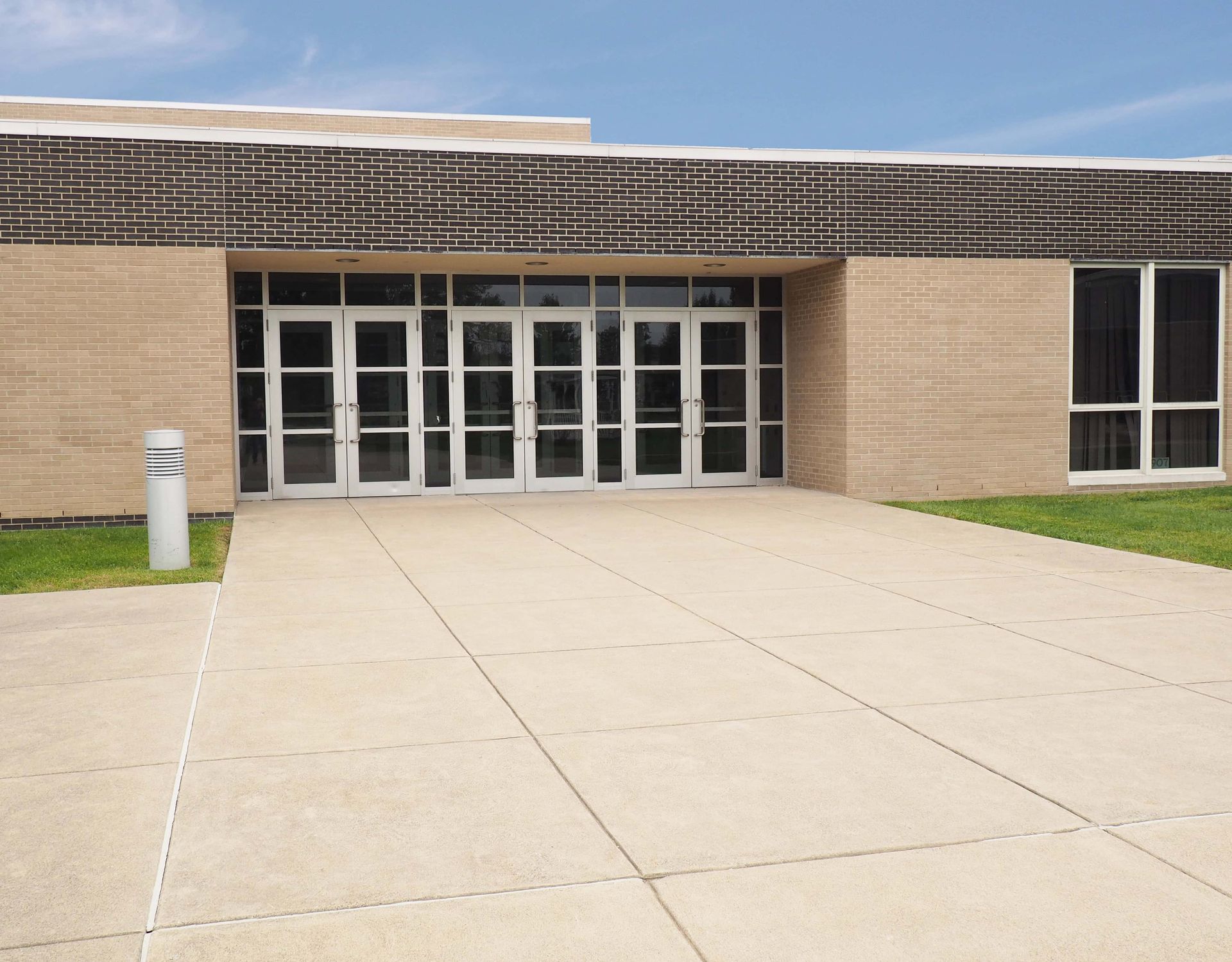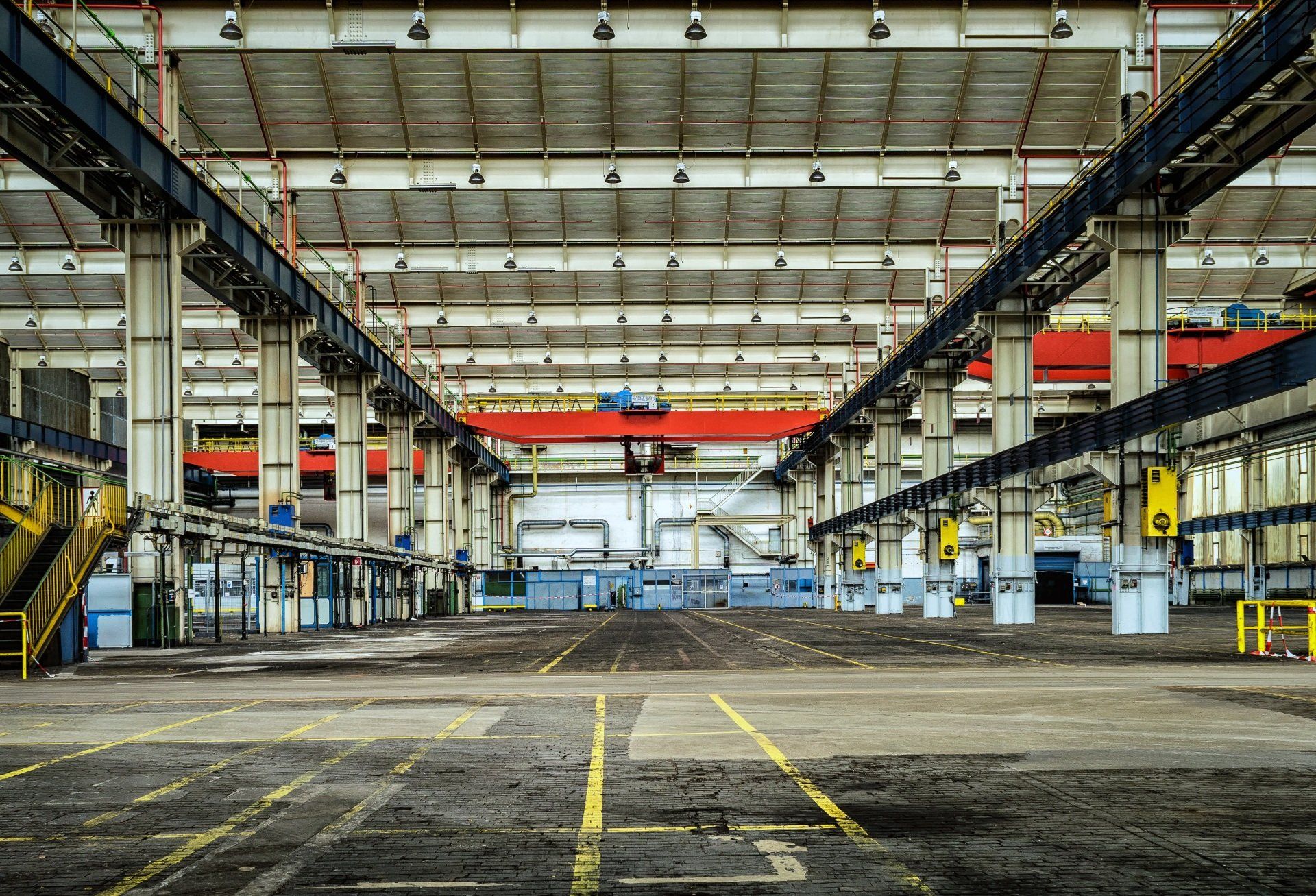The Annual Commercial Building Exterior Checklist: Preventing Small Problems From Becoming Big Expenses
Key Takeaways
- Cost Prevention: Regular annual inspections help identify minor issues that typically cost 80-90% less to fix than waiting for major failures.
- Optimal Timing: Spring inspections (March-May) after winter weather provide the best opportunity to address weather damage before summer heat.
- Professional Partnership: Combining self-inspections with professional assessments creates the most effective approach to building exterior maintenance.
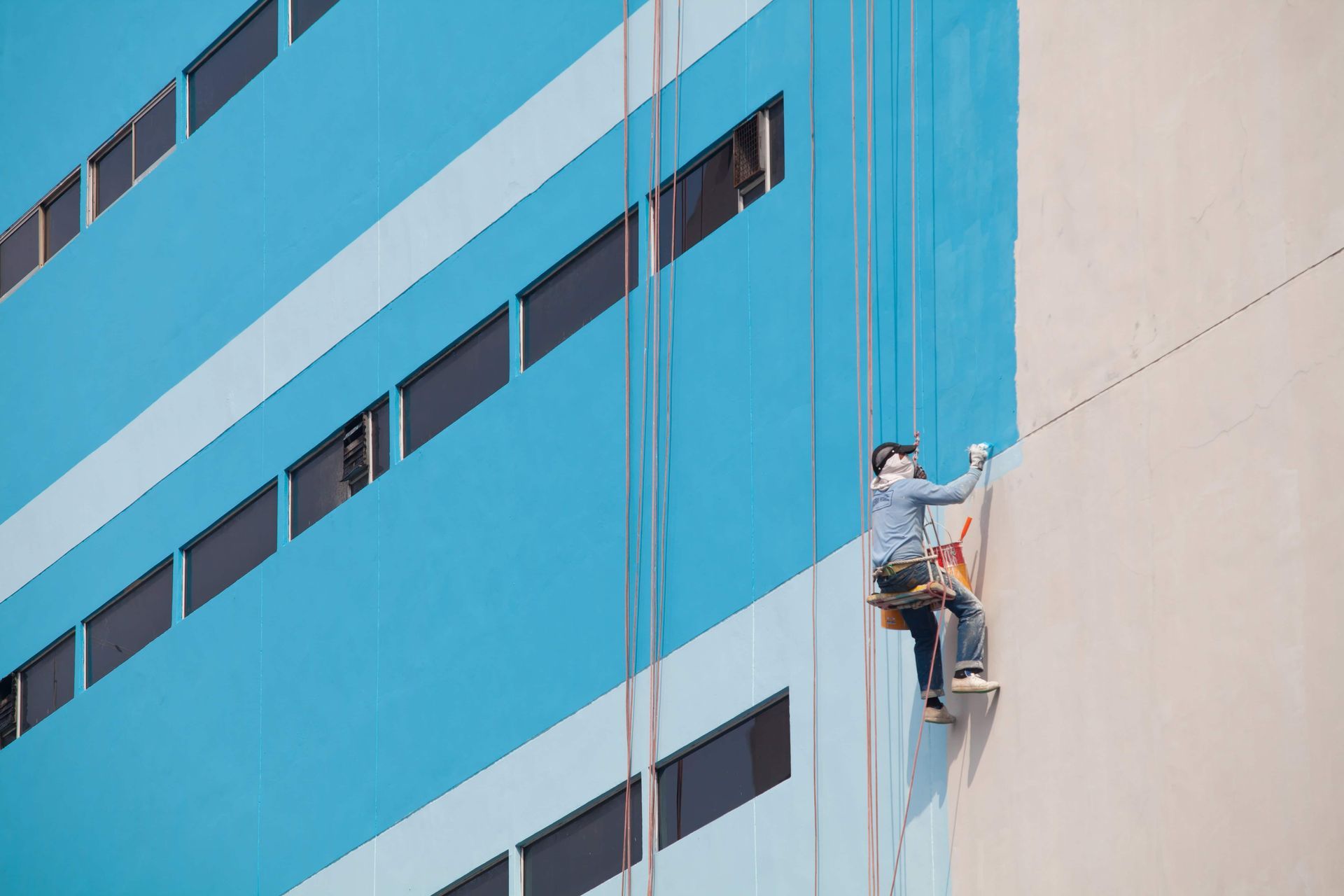
As a commercial property owner or manager, you know that unexpected building repairs can wreak havoc on your budget. What you might not realize is that most of these "surprises" give plenty of warning signs before they become expensive emergencies.
The key to avoiding these budget-busting repairs? A systematic annual inspection of your building's exterior. By identifying small issues early, you can address them before they escalate into major problems that cost significantly more to fix and potentially disrupt your operations.
The Financial Case for Annual Inspections
Before diving into what to look for, let's understand why this matters to your bottom line:
The 80/20 Rule of Building Maintenance
In commercial property management, a variation of the Pareto Principle applies: spending 20% of what a major repair would cost on preventative maintenance can eliminate 80% of unexpected building issues.
For example:
- Repairing a small section of damaged sealant: $500-1,000
- Addressing the resulting water damage if left unchecked: $5,000-25,000+
This pattern repeats across virtually all building systems. Early intervention nearly always costs a fraction of emergency repairs.
The Compound Effect of Deferred Maintenance
Small problems don't exist in isolation. One minor issue often triggers a cascade of related problems:
- Clogged gutters lead to water overflow
- Overflow causes fascia and soffit damage
- Damaged areas allow water behind siding or into walls
- Hidden moisture creates mold and rot
- Structural elements begin to deteriorate
Each step in this progression becomes more expensive to address than the last. Breaking the chain early dramatically reduces your total costs.
Your Annual Exterior Inspection Checklist
To make this process manageable, we've organized the inspection into key zones. Use this checklist each spring to identify issues when they're small and affordable to fix.
1. Roof and Drainage Systems
Your building's first line of defense against water damage starts at the top.
Roof Surface
- [ ] Look for missing, damaged, or curling roofing materials
- [ ] Check for pooling water or debris accumulation
- [ ] Inspect for blistering, cracking, or other signs of deterioration
- [ ] Examine roof penetrations (vents, pipes, HVAC equipment) for secure seals
Drainage Systems
- [ ] Ensure gutters and downspouts are securely attached
- [ ] Check for clogs, proper water flow, and appropriate drainage away from the building
- [ ] Look for signs of overflow or backup during recent rains
- [ ] Inspect internal drains and scuppers for blockages
- [ ] Verify that downspouts direct water away from the foundation
Flashings and Transitions
- [ ] Check all roof-to-wall transitions for secure flashings
- [ ] Inspect around chimneys, skylights, and other penetrations
- [ ] Look for separation, gaps, or failed sealants at critical junctions
- [ ] Examine parapet caps for secure attachment and proper sealing
2. Exterior Walls and Finishes
Wall systems make up the largest portion of your building envelope and deserve careful attention.
Masonry Surfaces
- [ ] Look for cracked, loose, or missing mortar (particularly at corners and openings)
- [ ] Check for efflorescence (white powdery deposits indicating water issues)
- [ ] Inspect for cracked or spalling brick, concrete, or stone
- [ ] Look for bulging or bowing in wall sections
Siding and Panel Systems
- [ ] Examine for loose, damaged, or missing sections
- [ ] Check for warping, rotting, or separation at seams
- [ ] Look for staining or discoloration that might indicate leaks
- [ ] Inspect attachment points for security and potential water entry
Painted Surfaces
- [ ] Look for peeling, bubbling, or cracking paint
- [ ] Check for fading, chalking, or uneven appearance
- [ ] Pay special attention to areas with southern or western exposure
- [ ] Note areas where paint is failing to determine if there's an underlying moisture issue
Expansion and Control Joints
- [ ] Ensure joint materials are intact and functional
- [ ] Look for compression, expansion, or failure of joint systems
- [ ] Check that joints aren't filled with debris or incompatible materials
- [ ] Verify that movement capability remains in joint systems
3. Windows, Doors, and Building Openings
These transition points are common areas for water intrusion and energy loss.
Windows
- [ ] Check for failed seals (fogging between panes)
- [ ] Inspect perimeter sealants for cracking or separation
- [ ] Test operation of operable windows
- [ ] Look for staining or damage on interior finishes near windows
- [ ] Examine gaskets and weatherstripping for deterioration
Doors
- [ ] Inspect weatherstripping and sweeps for damage or wear
- [ ] Check that doors close and seal properly
- [ ] Look for warping, swelling, or difficulty in operation
- [ ] Inspect thresholds for secure attachment and proper sealing
- [ ] Check automatic door operations if applicable
Other Penetrations
- [ ] Examine utility entries (electrical, gas, communications)
- [ ] Inspect vents, exhaust fans, and HVAC penetrations
- [ ] Check loading dock seals and bumpers
- [ ] Look for any signs of water staining around penetrations
4. Foundation and Ground-Level Conditions
The base of your building needs particular attention as it bears structural loads and manages water.
Foundation Walls
- [ ] Look for cracks, particularly those wider than 1/8"
- [ ] Check for signs of movement or settlement
- [ ] Inspect for water staining or efflorescence
- [ ] Verify that waterproofing and dampproofing systems remain intact
Grading and Drainage
- [ ] Ensure ground slopes away from building (minimum 6" drop over 10 feet)
- [ ] Check that downspouts discharge away from the foundation
- [ ] Look for erosion or water pooling near the building
- [ ] Inspect drainage systems for proper function
Building Perimeter
- [ ] Look for vegetation growing against the building
- [ ] Check for pest entry points
- [ ] Inspect expansion joints where slabs meet foundation walls
- [ ] Check for trip hazards on walkways and access points
5. Exterior Fixtures and Attachments
Don't overlook items attached to your building, as they can create entry points for water.
Signage
- [ ] Check that signs are securely attached
- [ ] Look for water staining below attachment points
- [ ] Inspect for proper sealing around mounting hardware
- [ ] Verify that electrical connections are weatherproof
Lighting
- [ ] Ensure fixtures are secure and properly sealed
- [ ] Look for water accumulation inside fixtures
- [ ] Check for damage to wiring conduits or connection points
- [ ] Test functionality of security and safety lighting
Accessories
- [ ] Inspect awnings, canopies, and sunshades for secure attachment
- [ ] Check railings, ladders, and other safety equipment
- [ ] Look for secure attachment of cameras, antennas, and similar items
- [ ] Verify that attachment points are properly sealed
When to Conduct Your Inspection
Timing matters when conducting building exterior inspections. We recommend:
Primary Annual Inspection: Early Spring
The best time for your comprehensive annual inspection is early spring (March-May in Pennsylvania), because:
- Winter weather often creates or worsens existing problems
- Issues can be addressed before summer heat and storms
- Contractors typically have better availability before their busy season
- You'll have time to budget and plan for larger repairs
Secondary Check: Fall
A quick follow-up inspection in fall helps:
- Ensure your building is ready for winter weather
- Address any summer storm damage
- Clear gutters and drainage systems before leaf fall
- Identify any urgent repairs needed before freeze/thaw cycles begin
After Significant Weather Events
Additional targeted inspections are wise after:
- Major storms
- High wind events
- Heavy snow or ice accumulation
- Prolonged extreme temperatures
Documenting Your Findings
A systematic approach to documentation multiplies the value of your inspections:
Create a Baseline Record
Your first thorough inspection should establish a baseline:
- Take dated photographs of all building elevations
- Document existing conditions, even minor ones
- Note areas that might need monitoring over time
- Create a building-specific checklist for future inspections
Use Technology to Your Advantage
Modern tools make documentation easier:
- Smartphone apps designed for property inspections
- Cloud storage for organizing photos and notes
- Digital voice recorders for verbal notes during inspections
- Drones for safely viewing roofs and upper areas (where legally permitted)
Maintain Historical Records
Over time, your inspection history becomes invaluable:
- Track how quickly issues progress
- Identify patterns and recurring problems
- Document the effectiveness of previous repairs
- Provide continuity when property management changes
The Professional Partnership Approach
While self-inspections are valuable, partnering with professionals creates a more comprehensive approach:
What You Can Do
As someone who sees the building daily, you're ideally positioned to:
- Notice new or changing conditions
- Conduct regular visual inspections
- Document observations consistently
- Respond quickly to emerging issues
When to Call Professionals
Commercial building specialists like PR Commercial Painting bring:
- Technical expertise in building systems
- Specialized equipment for detailed inspections
- Experience recognizing subtle warning signs
- Knowledge of proper repair methods
- Access to areas that may be difficult or unsafe to inspect yourself
The Ideal Inspection Schedule
A balanced approach typically includes:
- Quarterly quick checks by in-house staff (15-30 minutes)
- Annual detailed inspection with a professional partner
- Specialized assessments of specific systems every 2-5 years
- Immediate targeted inspections after significant events
Prioritizing Your Findings: The Triage Approach
Not all issues require immediate attention. Use this classification system to prioritize repairs:
Critical (Address Within 30 Days)
These issues pose immediate risks to:
- Building occupant safety
- Structural integrity
- Active water intrusion
- Operational continuity
Examples include loose masonry that could fall, active leaks, or compromised structural elements.
Significant (Address Within 3-6 Months)
These problems will worsen significantly if left unaddressed:
- Damaged but still functional drainage systems
- Deteriorating sealants with early signs of water entry
- Moderate roof damage
- Foundation cracks showing recent movement
Monitoring Required (Re-evaluate Next Inspection)
These issues bear watching but may not require immediate repair:
- Hairline cracks showing no change over time
- Minor paint wear on protected surfaces
- Slight settling with no ongoing movement
- Cosmetic concerns without functional impact
Preventative Maintenance (Schedule Routinely)
These activities prevent future problems:
- Caulking and sealant renewal
- Gutter cleaning
- Touch-up painting
- Surface cleaning and treatment
Creating Your Action Plan
Once you've completed your inspection and prioritized findings, develop a strategic plan:
1. Emergency Repairs
Address critical issues immediately to prevent further damage. These often pay for themselves by preventing much larger expenses.
2. Seasonal Coordination
Group repairs logically by:
- Temperature requirements (some sealants and coatings require specific conditions)
- Weather vulnerability (prioritize water-related repairs before rainy seasons)
- Contractor availability (schedule well in advance for seasonal work)
3. Budget Integration
Incorporate findings into your financial planning:
- Allocate funds for identified immediate needs
- Create reserves for anticipated future repairs
- Develop multi-year projections for major systems
4. Maintenance Schedule Development
Create a calendar of routine maintenance activities:
- Monthly quick checks of critical areas
- Quarterly preventative tasks
- Annual professional assessments
- Cyclical larger projects (painting, sealant replacement, etc.)
The Five Most Commonly Missed Exterior Issues
Based on our experience with hundreds of commercial buildings, these frequently overlooked items deserve special attention:
1. Transitions Between Different Materials
Where dissimilar materials meet (like masonry to metal, or wall to roof), check carefully for:
- Separation due to different expansion rates
- Failed sealants or flashings
- Water staining indicating leakage
- Proper overlap and water-shedding design
2. Roof-to-Wall Connections
This critical junction often hides problems:
- Inspect flashings for secure attachment
- Check counter-flashings for proper overlap
- Look for separation allowing water entry
- Examine for signs of recent movement
3. Reverse-Slope Conditions
Areas where water might pool or flow toward the building need scrutiny:
- Window sills without proper slope
- Flat decorative elements
- Damaged or improperly designed copings
- Areas where additions meet original structures
4. Secondary Drainage Paths
When primary systems fail, does water have a safe secondary path?
- Overflow scuppers should be clear and functional
- Secondary roof drains should be unobstructed
- Window weep systems should be open and working
- Wall systems should have functioning drainage planes
5. Below-Grade Waterproofing
Often invisible until problems develop:
- Look for staining or efflorescence on foundation walls
- Check interior perimeter areas for signs of water entry
- Ensure drain tile systems discharge properly
- Verify that landscaping and hardscaping direct water away from the building
Conclusion: The Ounce of Prevention
As Benjamin Franklin wisely noted, "An ounce of prevention is worth a pound of cure." This principle applies perfectly to commercial building maintenance. The modest time and cost investment of annual exterior inspections typically delivers returns of 500% or more when considering avoided emergency repairs, extended system life, and reduced operational disruptions.
By implementing a systematic inspection process, documenting conditions, and addressing issues early, you transform building maintenance from a reactive emergency expense to a predictable, manageable investment in your property's longevity and value.
For commercial property owners in Southeast Pennsylvania, PR Commercial Painting offers professional building exterior assessment services as part of our commitment to helping clients protect their investments. Our experienced teams can help you develop and implement a comprehensive inspection and maintenance program tailored to your specific property needs.
PR Commercial Painting provides professional
commercial exterior maintenance services throughout Southeast Pennsylvania, South Jersey, and North Delaware. Contact us today at 610-232-7332 to schedule a comprehensive exterior assessment or discuss a custom maintenance program for your commercial property.
